Global Insights – June 2024
Our Kea Regional Directors give on-the-ground insights into what is happening in their region and the opportunities this presents for New Zealand export businesses.
North America
According to a report released this month the US has surpassed Australia to become New Zealand’s second largest export market in the year ending March 2024, now trailing only behind China. Last year New Zealand exported NZ$14.6 billion in goods and services to the US and imported NZ$11.4 billion, representing a trade balance of NZ$3.5 billion and a total trade value of NZ$25.8 billion. Unlike the overall export figures for New Zealand in 2023 which saw goods export growth fall and services increase, both goods and services exports to the US grew. Goods growth was a solid 5.8% though services enjoyed particularly strong growth of 32%.
However it may not be cause for export Kiwi companies to celebrate, with data released this month showing US consumer spending remains sluggish. US retail sales barely rose in May with inflation and higher interest rates testing the resilience of consumers and forcing households to prioritise essentials and cut back on discretionary spending. Tepid retail sales bolstered economists’ expectations that the Federal Reserve could still start cutting interest rates in September. U.S. central bank officials last week saw the anticipated rate cut delayed to perhaps as late as December. This year’s US elections are also being blamed for the cautionary outlook.
The tech sector and in particular AI continues to drive growth in the US and this month, Nvidia, Wall Street’s artificial intelligence poster child, is now the most valuable company in the world, taking the crown from Microsoft. Nvidia’s market capitalization closed at roughly $3.34 trillion this week, edging past Microsoft’s $3.32 trillion value. Apple is the third most valuable company in the US with a $3.27 trillion market cap.The chip maker’s stock has been on the rise for the last year and a half. Nvidia’s chips are unmatched in producing processors that power artificial intelligence systems, including for generative AI, the technology backing OpenAI’s ChatGPT that can create text, images and other media.
Gary Fortune, Kea North America Regional Director
UK and Europe
The focus in the EU this month has been on the European Parliament Elections. 27 member states of the European Union held elections for the European Parliament from 6–9 June. With 185 million votes counted, the European People’s Party — European Commission President von der Leyen’s centre-right party — emerged in top position with a quarter of the seats (189) in the 720 seat chamber, up from a fifth in 2019. More generally, the elections saw the far-right gain ground across the bloc but not enough to put them in power in EU institutions. President Macron, who saw the nationalist party led by Marine Le Pen win more than twice the votes of his centrist alliance, called a snap election in France, which will be held in two rounds on 30 June and 7 July. This election, alongside the July election in the UK will no doubt create some uncertainty in the markets over the coming months and Kiwi exporters will need to keep this in mind. It’s also worth noting that the UK is about to enter its summer trading period with many businesses closing and people travelling for the holidays, so market visits may not be as fruitful in the coming months.
On 31 May, Minister for Trade Todd McClay and British High Commissioner Iona Thomas met to celebrate the one year anniversary of the New Zealand – United Kingdom Free Trade Agreement. The agreement has been a game changer for Kiwi businesses with exports to the UK growing by 19 percent since entry into force. Officials from MFAT and the UK Department for Business and Trade held the inaugural Joint Committee that oversees the operation of the agreement. The FTA is being utilised at a high rate with the UK now New Zealand’s fastest growing market. Highlights from the Joint Committee include accepting a wider range of oenological practices and discussing opportunities to better integrate digital technologies into trading processes.
The European Central Bank cut interest rates on 6 June for the first time in almost five years, but warned future reductions would depend on price pressures easing further. Accordingly, the 25 basis point cut is seen by commentators as a calibrated step to weaken the vice on the Eurozone economy, and not the beginning of a quickfire easing cycle.
Sara Fogarty, Kea UK/Europe Regional Director
China
At the end of May Shanghai welcomed around 150,000 visitors to the annual SIAL China, a leading trade fair for the food & beverage industry. This year the event was held concurrently with SIAL Wine World and showcased a number of trends which are dominating the Chinese market at present.
China’s food industry is huge and provides a lot of opportunities for Kiwi exporters who are successful in breaking into this difficult market. Most of this year’s trends were linked to health and convenience – two key factors driving the industry. Overarching trends included healthy upgrades for non-guilty pleasures, snack innovation for emotional comfort / self-care, and the blurring of lines between snacks and meals.
Brands looking to cash in on consumers’ desire for healthy snack options are doing so by emphasising benefits like high protein, high fibre, and vitamin-fortified snacks. They are also showcasing foods which have low or no fat and zero additives and using techniques like liquid nitrogen and freeze drying to maintain the original nutritional value and taste as much as possible. For example domestic brand Wuling Times (五零时代) have launched their ‘vitamin C infused spicy strip.’. 200g of spicy strips contain approximately 100mg of vitamin C, equivalent to 2 oranges. They also contain no additives. This type of transparent marketing on what is not in the product is driving huge brand growth in this category.
On the flipside there are increasing numbers of young people who are increasingly struggling with life’s pressures and psychological challenges. Growing awareness in Mental Health and emotional regulation has opened up new opportunities for innovation in the snack market, especially in sweets. Snack products can offer emotional comfort to consumers through rich taste experiences, IP collaborations, vibrant packaging and playful snacking experiences.
And finally meal replacement snacks are gaining popularity. Changes in family structures are leading to an increase in the number of individuals living alone, primarily young people. This group prioritises convenience and are more likely to forgo time consuming and inconvenient cooking leading to huge opportunities for brands who can capitalise on these trends.
Rebecca Bao, China Regional Director

New Zealand
New Zealand has just hosted ASEAN and Australian officials for the ASEAN Australia New Zealand Free Trade Agreement (AANZFTA) Joint Committee in Auckland. The Joint Committee brought together technical trade officials to discuss implementation of the AANZFTA agreement and build momentum towards entry into force of the AANZFTA upgrade. Alongside the meetings, New Zealand held a Workshop on Non-tariff Barriers and an Integration Partnership Forum on Enabling MSMEs to Trade and Internationalise.
The Prime Minister has also taken part in his first official visit to the Pacific this month visiting Niue and Fiji. Christopher Luxon and Niue Premier Tagelagi discussed the bilateral relationship and priority areas of focus, before meeting with Fiji’s Prime Minister Hon Sitiveni Rabuka and Fijian President H.E. Ratu Wiliame Katonivere. The visit had a significant trade and economic focus with Prime Minister Luxon noting that Fiji is one of New Zealand’s top 25 trading partners and presents opportunities for New Zealand and Fijian businesses to deepen trade and investment linkages. Two-way trade over the past year grew by almost 40 percent which is the second highest growth rate of any of New Zealand’s top 25 trading partners — behind only India. The Prime Minister made a series of announcements including the removal of transit visa requirements for Fijian citizens transiting New Zealand, aspiration for two-way trade to reach NZ$2 billion by 2030 and several climate and agriculture development initiatives.
Finally this month there has also been a strong focus on increasing trade with Japan – currently New Zealand’s 4th largest trading partner. The Prime Minister has led a large trade delegation to the country with the aim of strengthening relationships and attracting investment into New Zealand. The Prime Minister says Japan is a key part of the Government’s efforts to double exports in the next 10 years. Christopher Luxon visited New Zealand-related trade and enterprises, including a Costco selling New Zealand kiwifruit, salmon and honey, as well as watching Rocket Lab sign an agreement to launch satellites for a Japanese company.
Kellie Addison, Global Director Stakeholder Affairs
HOW KEA CAN HELP YOUR BUSINESS GROW
Kea Connect
Kea Connect is a free service that will help your business grow offshore. We connect you personally with regional, sector-specific experts and peers.
Resources
Kea is here to help New Zealand businesses grow offshore. Be inspired and hear advice from businesses who have created their export path.
Jobs Portal
Looking for the right talent for your team? Reach our global Kiwi community through the Kea international job portal.

 MENU
MENU






